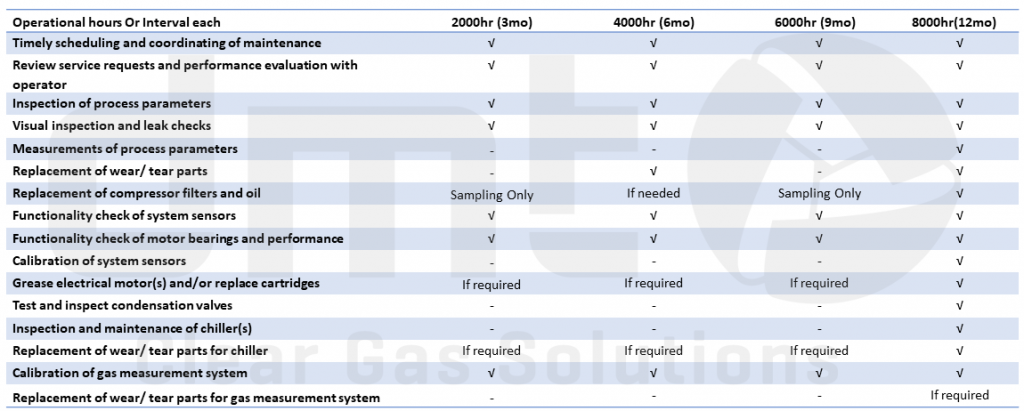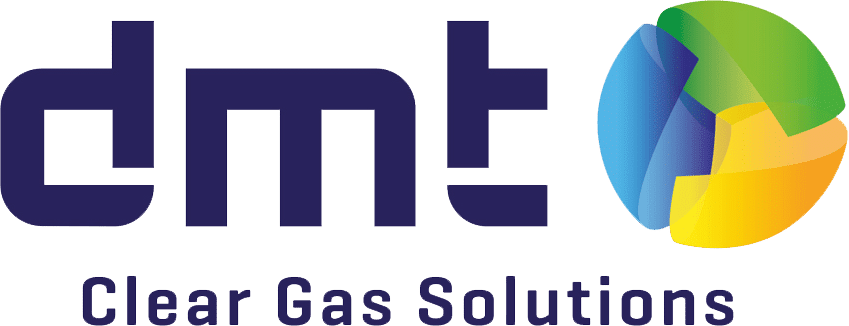7 Ways to Maximize Uptime for RNG Systems
Renewable Natural Gas Uptime
If the biogas upgrading facility does not run, then it cannot produce renewable natural gas (RNG). And without production comes lost of revenue. The tips and topics this article covers have been successfully applied to DMT’s RNG plants all around the globe, helping clients maximize uptime and operate successfully.
Unplanned vs. Planned Downtime
The major difference between unplanned and planned downtime is evident in the bottom line. Unplanned downtime, a lapse in operations due to an unforeseen event, impacts a RNG plant’s return on investment (ROI) more so than planned downtime. This is because by definition planned downtime is scheduled and, therefore, controlled in terms of the anticipated revenue, time, productivity and labor loss.
The True Cost of Downtime
More damaging, unplanned downtime will typically cost 1.5 times more than planned downtime. Additionally, emergency downtime, or when a problem has gone catastrophically wrong, can cost as much as five times more than planned downtime. As previously mentioned, the impacts of downtime in this industry can equate to revenue loss and additional production costs but it can also cause reduced assets, safety risks and even legal ramifications.
How does downtime impact the RNG industry?
Assuming more than 96 percent methane and generating RNG at $70 per Metric Million British Thermal Unit, or MMBtu, the loss of daily revenue for a plant of
- 180 standard cubic feet per minute (SCFM) is $8,800 per day
- 4,000 SCFM is $235,000 per day, or $10,000 per hour.
When taking into consideration idle employee time, extra costs associated with scheduling emergency repairs and decreased production capacity, the tangible cost of downtime calculates to even more.
1. Determine threats to downtime.
First things first, in order to maximize uptime, a successful renewable natural gas plant will understand and mitigate downtime threats. The three main catalysts of downtime will typically stem from
- Technical failure, such as part break downs or internet failure,
- Labor issues, such as failure to adhere to best practices or short-sighted decision making, and
- External failure, such as power outages or lack of raw materials.
Develop service agreements and protocols to reduce or mitigate such threats.
Lucky for the industry, about 90% of downtime is controllable, especially when service agreements are already in place the moment RNG is going to the grid. It should be noted, however, that these downtime catalysts are often symptoms of more sinister problems harder to detect, such as poor maintenance or a need for better management and processes.
2. Supply Chain Management
Another facet of managing RNG equipment uptime relates to the supply chain itself. The availability of crucial components is critical to success. Crucial components for a RNG plant can be
- Consumables, such as media or caustic soda
- First line spare parts, which are essential on site due to regular maintenance and possible failure, and
- Second line spare parts, which are unlikely to fail but can create catastrophic downtime.
Much of downtime can come from inventory stock-outs and delayed deliveries. What if an important piece of equipment has a 15-week lead time? This equates to an expensive delay with machinery and workers standing idle while waiting for parts to arrive.
Furthermore, it’s important to decide whether to stock costly parts or have an external partner manage the process. And if the facility does decide to invest in spare part infrastructure, are the operators trained to swap these parts out? Not having a spare part plan in place is a recipe for failure.
3. Periodic Inspections
A 2017 Vanson Bourne report found that 70% of companies lack complete awareness of when equipment is due for maintenance or upgrade. For a DMT system, DMT recommends quarterly preventive maintenance and inspection after every 2000 operational hours. At minimum installations require semi-annual preventive maintenance and inspection every 4000 hours.

4. Preventive (Planned) Maintenance. Make maintenance a ritual.
Preventive maintenance is a systematic approach to building operations. It aims to predict and prevent catastrophic equipment failures before they occur.
Converting a RNG facility to a preventive maintenance model, whether time-based or usage-based, can be challenging, even for the most seasoned team. That being said, unplanned asset failure is stressful and time-consuming for a facilities team to fix. While “if it’s not broken, don’t fix it” works in the short-term, constant reactive maintenance actually wastes thousands of dollars each year due to lack of consistent, proactive repairs.
5. Leveraging Partner Expertise
Whether it’s optimizing resources, analyzing data sets, improving safety, or dealing with an emergency, plant operators need help. With millions of dollars’ worth of equipment on the line, workers with special skills are required. The key here is specialization: knowing who the experts are.
On-site, in the middle of the night, it’s always preferable to have a field service expert who knows exactly what’s going on and how to help. The benefit of relying on a service agreement with 24/7/365 technical support maximizes revenue in the long run. These partners have the core knowledge to assist and troubleshoot quicker and faster so RNG plants can be back online, generating revenue.
6. Improved Education
A fully trained and experienced operator in the field has a huge impact on a RNG plant’s uptime. Quite often, unscheduled downtime occurs because an operator is not trained well enough to know there are ways to check what’s wrong before pulling the “OFF” lever. The time and resources spent on ensuring operators are fully trained on the system’s intricacies will be returned with increased efficiency and reduced downtime. Additionally, the return to productivity using a trained service provider is much shorter as well as the time to a solution is much faster.
7. Intelligent Systems
When it comes to downtime, innovative technologies are often both the problem and solution. The increasing complexity in technology creates more points of failure and new sources of downtime can creep into processes. But new technologies can also proactively predict, prevent, and mitigate unplanned downtime. Because a lot of RNG plants today are located in remote, hard-to-access areas, project developers place a premium on systems that can remotely monitor performance. Using smart systems to reduce downtime, is an extremely valuable option.
An Experienced RNG Partner to Maximize Uptime
When making renewable natural gas, uptime is the key component to success. Our service support offers solutions to all the topics covered. From weekly system monitoring to virtual support, DMT’s service agreements
- Increase uptime,
- Reduce production downtime and overtime costs,
- Keep budgets under control with our spare part service, scheduled maintenance and training,
- Offer an experienced, intelligent guide to a preventive maintenance model,
- Offers regular data insights to keep maintenance and production on track,
- Reduce operator stress and
- Increase customer satisfaction
Get the assurance that all systems are in place to maximize RNG plant uptime by partnering with DMT. Once a service agreement is in place, DMT becomes a part of the operations team.
Author: Missy Lee
